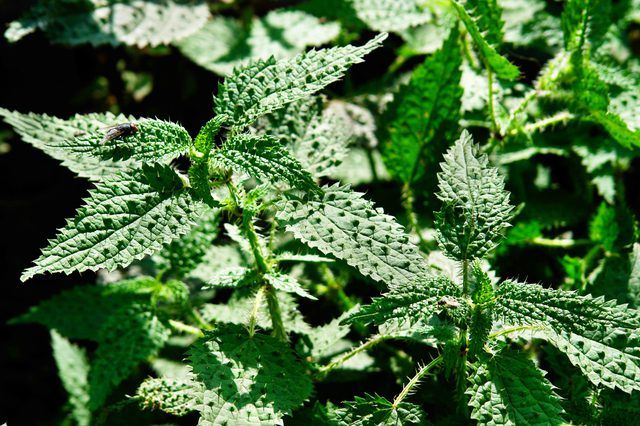Bulbs
Flower Basics
Flower Beds & Specialty Gardens
Flower Garden
Garden Furniture
Garden Gnomes
Garden Seeds
Garden Sheds
Garden Statues
Garden Tools & Supplies
Gardening Basics
Green & Organic
Groundcovers & Vines
Growing Annuals
Growing Basil
Growing Beans
Growing Berries
Growing Blueberries
Growing Cactus
Growing Corn
Growing Cotton
Growing Edibles
Growing Flowers
Growing Garlic
Growing Grapes
Growing Grass
Growing Herbs
Growing Jasmine
Growing Mint
Growing Mushrooms
Orchids
Growing Peanuts
Growing Perennials
Growing Plants
Growing Rosemary
Growing Roses
Growing Strawberries
Growing Sunflowers
Growing Thyme
Growing Tomatoes
Growing Tulips
Growing Vegetables
Herb Basics
Herb Garden
Indoor Growing
Landscaping Basics
Landscaping Patios
Landscaping Plants
Landscaping Shrubs
Landscaping Trees
Landscaping Walks & Pathways
Lawn Basics
Lawn Maintenance
Lawn Mowers
Lawn Ornaments
Lawn Planting
Lawn Tools
Outdoor Growing
Overall Landscape Planning
Pests, Weeds & Problems
Plant Basics
Rock Garden
Rose Garden
Shrubs
Soil
Specialty Gardens
Trees
Vegetable Garden
Yard Maintenance
About Herbicides
When used properly, herbicides can aid in removing undesirable plants from gardens, lawns and natural areas.

Herbicides are chemicals used to weaken and kill unwanted plants, from common garden weeds to exotic invasive species. Herbicides work in different ways, depending on their active ingredients, and are not interchangeable. To avoid harm to your garden, yourself and the environment, identifying the type of plant you want to kill and matching it with the right type of herbicide is crucial.
Read an herbicide's label closely; failing to follow an herbicide label's instructions is against the law.
Types of Herbicides
Pre-emergence herbicides are applied before weeds emerge in a garden. They are most effective against annual weeds such as crabgrass (Digitaria spp., hardy in U.S. Department of Agriculture plant hardiness zones 4 through 9) and annual bluegrass (Poa annua); they do not control perennial weeds well. Pre-emergence herbicides include trifluralin, pendimethalin and ethalfluralin. Crabgrass has invasive qualities.
Post-emergence herbicides control actively growing weeds, those that already emerged. Post-emergence herbicdes can be divided into two types:
Selective herbicides control specific kinds of weeds and do not injure desirable plants, such as ornamental plants and crops. They are used to control grass weeds, annual and perennial broadleaf weeds and sedges. Triclopyr is a selective post-emergence herbicide often used to control annual weeds in turf.
Non-selective herbicides kill all kinds of plants indiscriminately, from weeds to any other plants they contact. Glyphosate is a widely used non-selective post-emergence herbicide used to kill many types of plants, including common broadleaf weeds such as dandelion (Taraxacum officinale), which grows as a perennial plant, or is hardy, in U.S. Department of Agriculture plant hardiness zones 5 through 9, and curled dock or curly dock (Rumex crispus), hardy in USDA zones 4 through 8.
Tip
Herbicides are also classified by how safe they are for people to use. The classification of "Caution" is used for the least toxic herbicides. "Warning" is used for mildly to moderately toxic herbicides, and "Danger" is the classification for herbicides that are very toxic or poisonous.
Their Harm to Plants
The way an herbicide works in order to cause plant injury or death is called its mode of action.
Pre-emergence herbicides containing trifluralin, pendimethalin or ethalfluralin work by blocking cell division, inhibiting root growth.
The post-emergence herbicide glyphosate interferes with vital enzymes that produce amino acids that the plant needs to live. This interference shuts down the plant's metabolic activity, eventually killing the plant.
Their Proper Application
Pre-emergence herbicides are applied directly to soil before weeds emerge. Because they are applied to soil and designed to kill plants before they emerge, their risk of drift -- wind blowing them away from the intended target and onto other areas where they can harm emerged plants -- is low.
Post-emergence herbicides must make contact with the target plant to work. They may be sprayed directly onto foliage or cut stems.
The best time to spray foliage with a post-emergent herbicide is when the plant is actively growing and, ideally, flowering or beginning to produce fruit. Established perennials usually die in two to four weeks after their foliage is sprayed, and seedlings die in two to four days. Herbicide may be sprayed by using a backpack sprayer or handheld sprayer. An herbicide product must be diluted with water so that the concentration of its active ingredient is 5 percent in the sprayed solution, unless the herbicide's label specifies otherwise.
Before herbicide is applied to a plant's stems, the plant needs to be cut close to the ground. Using a solution that is 25 to 30 percent of the active ingredient is usually necessary, unless the herbicide's label states otherwise. Right after cutting the plant, the herbicide solution can be applied directly to the stems with a paintbrush, spray bottle or sponge. Treating woody stems is usually most effective in late summer and fall. Treating stems is an effective way to kill woody plants such as the thorny Japanese barberry (Berberis thunbergii), hardy in USDA zones 4 through 9, and the invasive Japanese honeysuckle (Lonicera japonica), hardy in USDA zones 4 through 10.
For herbicides to work, they must be applied on a dry day, and rain cannot fall for the following 24 to 48 hours. If a heavy rainfall occurs within that time period, then the herbicide must be reapplied.
For additional information on herbicides and their use, see "Pros and Cons of Herbicides," and "Organic Herbicides."